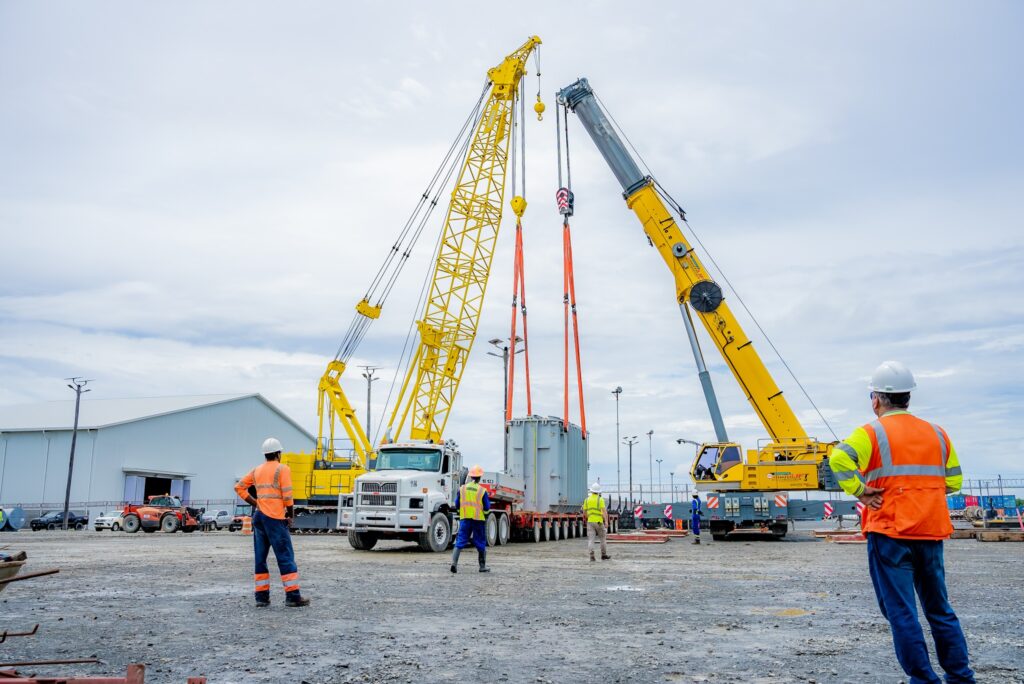
By Svetlana Marshall
The President of ExxonMobil Guyana, Alistair Routledge has told the Guyana Energy Conference and Supply Chain Expo that the vision for gas development in Guyana does not stop at Wales, but includes maximizing the country’s natural gas to power an Alumina Plant, in addition to a Data Centre and a Fertilizer Plant.
In an address to the conference on Wednesday, Mr. Routledge said that vision includes building on the first Gas-to-Energy Project at Wales, while developing gas resources in the southeast portion of the Stabroek Block through a second Gas-to-Energy Project.
“Alumina production is a good use of gas. In fact, use of gas to produce alumina in its own right is a lower emission alumina supply in the world. Today actually yields a premium as a product to alumina that is generated using coal or oil. So, there is already a potential path to that energy transition contribution even aluminum, which is a metal that’s essential to the future,” Routledge explained.
He said together with the Government, ExxonMobil is also exploring the possibility of powering a Data Centre and a Fertilizer Plant in Berbice to meet global demands.
According to ExxonMobil Guyana boss, the country is already in talks with investors as the demand for energy to support Artificial Intelligence grows.
“Well, why not use gas in Guyana as part of distributed data centers and AI around the world? So that’s on our radar. And of course, fertilizer. Well, it’s potential that in the Wales development, there could be a fertilizer plant you could supply the fertilizer needs of Guyana, Northern Brazil, CARICOM. Within this region, there are significantly higher needs for fertilizer and so, we foresee the development of additional fertilizer,” the ExxonMobil Guyana President said.
He also stated that while it may be cost prohibitive to lay a pipeline all the way to Trinidad, there is the possibility of using Liquified Natural Gas Technology (LNG) to reach global markets. He said that option is also on the table, and is being investigated.

Just recently, the oil magnate submitted an Environmental Authorization Application for its eight project – the Longtail Project in the Stabroek Block.
The new project has the capacity to generate in excess of a billion cubic feet of gas, in addition to more than 250,000 barrels of crude per day.
“Instead of it being underpinned by 200,000-250,000 barrels per day oil facility, this one (Longtail) we expect will produce 250,000 barrels a day of condensate in the early years, but will have around one to 1.2 billion cubic feet a day of gas compression on board, 1.2 billion cubic feet a day. That’s more than double the largest of the other FPSOs that we have in construction from a from a gas compression point of view. It’s enormous,” Routledge said.
Routledge said at the start of oil production in Guyana in December 2019, there was no existing gas market, adding that it took considerable work with the Government to reach to this point.
The initiation of the first Gas-to-Energy Project at Wales in 2022 was the first step.
When completed, the project will see associated gas from an existing oilfield development being brought onshore to the 300MW Power Plant and Natural Gas Liquids (NGL) facility at Wales to power the country using gas turbines.

The project will significantly reduce the country’s use of the heavy fuel oil, thereby reducing greenhouse gas emissions.
Already, a US$1B gas pipeline, which was constructed by ExxonMobil, has been completed, while construction of the Power Plant and NGL facility is in progress.
“If we fully utilize the capacity of the pipeline, we anticipate being able to flow up to 120 million cubic feet per day of this rich gas that will support, of course, more power generation, fertilizer and of course, an estimated 10,000 barrels per day of natural gas liquid. So not an insignificant contribution for the country, but also potentially for the region,” he said.
The second Gas-to-Energy Project is intended to utilize an additional 75 million cubic feet per day, which will also supplied by ExxonMobil from offshore fields.
This phase will include the construction of another power plant with a capacity of 250 MW and an additional NGL plant. The infrastructure for Phase 2 is intended to be located next to the Phase 1 facilities at Wales.













You must be logged in to post a comment Login